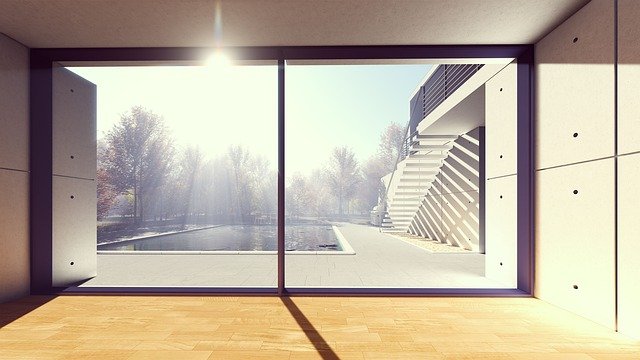Windows shouldn’t be an eyesore. If every time you look at your window you notice everything that’s wrong with it rather than the view outside, it’s time for a replacement.
New windows can boost the value of your house and create a totally new look within your home. Plus, modern windows are more energy-efficient than older ones, so you can save on your energy bills as well.
The question is, what style should you choose? What is the best choice between double-hung vs. single-hung windows? Find out what you need to consider before making the investment in this article.
Double-Hung vs. Single-Hung Windows: What Are They?
Also known as sash windows, single-hung windows have been around much longer. In fact, sash windows date back to the 17th century.
A single-hung window features a fixed top sash and a bottom sash that you can move vertically. You’re likely familiar with this style.
Single-hung windows are more common than double-hung windows simply because they’ve been around longer. Historic homes have this style, and people restoring an older home almost always use sash windows to keep the historical accuracy.
On double-hung windows, both sashes are operable. That means you can open the top or the bottom, or even both at once for optimal airflow.
Double-hung windows are becoming increasingly common, especially in newer homes.
The Benefits and Drawbacks of Single-Hung Windows
Now that you know more about the differences between single-hung windows vs. double-hung, you’re likely wondering about the pros and cons of each. Here’s what you need to know about single-hung window types.
The Pros
Single-hung windows are cheaper to install compared to double-hung ones. They average somewhere between $100-$300 per window, minus installation costs. You can expect another $75-$100 or so for installation, which is still cheaper than a double-hung window.
If you have a tighter budget, this style might be the better choice for you.
Single-hung windows have fewer moving parts. Many people consider single-hung styles more energy-efficient than their counterparts.
Single-hung styles are also more common in historic homes. If you have a historical house, this is something to consider when updating it.
The Cons
Only the bottom half of the window is operable on a single-hung style. This means you’re slightly limited when it comes to directing airflow through the home.
One of the biggest problems with a single-hung style is that these windows can be more difficult to clean and maintain. You have to be outside to clean the exterior of your window, compared to double-hung styles which tilt. For this reason, single-hung windows are more common on the first floor of a home.
The Pros and Cons of Double-Hung Windows
As double-hung windows rise in popularity, you might consider them for your home. But are they the right choice? Compare the pros and cons for yourself.
The Pros
One of the biggest benefits of this style is that it offers much more ventilation. You can open the top, the bottom, or even both parts of the window. This allows for maximum airflow through the house.
As a result, you can get a nice breeze throughout your home. It can be the perfect solution for a stuffy room.
Double-hung styles are also easier to keep clean. You simply have to tilt them inwards, and you can clean both the inside and the outside at once.
Depending on where you live, you should clean your windows twice a year. However, pollen, saltwater, dirt, and other factors may require washing the windows more often. With double-hung windows, cleaning the glass doesn’t have to be a monumental chore.
Double-hung windows also come in a wide variety of styles, meaning more finishes and designs to choose from.
Finally, double-hung windows might be better for families with small children or pets. If you’re worried about them escaping or falling through the bottom part of the window, simply keep it closed and open the top sash.
The Cons
Due to all the moving parts, double-hung windows have a higher chance of air leakage. You have to make sure double-hung windows seal properly near the top of the frame, or you could see higher heating and cooling bills.
That said, there are higher-quality double-hung windows that are more efficient. These options cost more but might be worth it.
Double-hung windows are more expensive to install in general compared to single-hung styles. A window can range from $400-$600 or so. Installation costs are also higher, usually around $150-$250.
Window Location
Many homeowners opt for both styles, especially if they have a two-story house. As we mentioned, single-hung windows need to be cleaned from the outside, meaning they’re best for lower levels. Double-hung windows can tilt inward and make cleaning easier, perfect for locations where it would be difficult or dangerous to clean them from outside.
Rooms that need a lot of ventilation, such as bathrooms and kitchens, are ideal locations for a double-hung window due to the increased circulation.
Which Is the Right Choice for You?
There are plenty of benefits to both single-hung and double-hung windows. But which is the right choice for your home? You’ll have to consider the following:
- Your budget
- Style of your home
- Airflow
- Energy-efficiency
- Cleaning and maintenance
- Window styles
Both window styles look lovely in any home. Plus, modern advancements have made both single-hung and double-hung styles more efficient. Consider the above points to determine the best style for you.
If you’re still having trouble, contact a window replacement company to learn more about your options. Renewal by Andersen is the highest rated window replacement service around.
Replace Your Windows and Transform Your Home
Double-hung vs. single-hung windows: which is the best choice? That ultimately comes down to your budget, window location, and the style of your house. You may choose to install both styles, creating a beautifully unique home.
If you’re looking for more improvement tips, check out some of our other posts. We cover everything you need to know to make your house a home.










